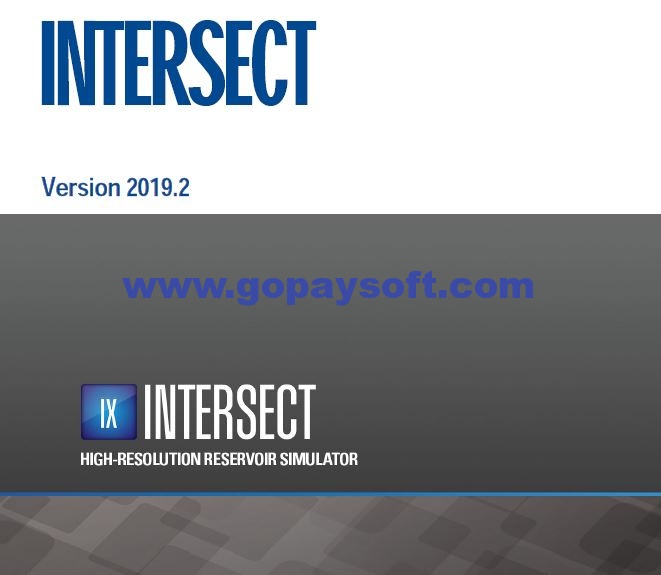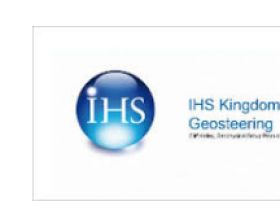
The simulator has been extended to support the following new features in the 2019.2 release. This release alsoThe simulator has been extended to support the following new features in the 2019.2 release. This release alsoaddresses a number of software issues present in the simulator.
Advanced completions optimization
The use of downhole flow control devices in complex wells can increase oil recovery by both increasing theinstantaneous production and extending the life of the well. The settings of the flow control devices can be changeddynamically. Advanced completions optimizers are implemented to enable the dynamic settings to optimize oil recovery.Two alternative algorithms are available:
• A reactive optimizer that defers the arrival of gas and water by algorithms to balance the flows or drawdowns fromthe production zones. After gas or water breakthrough, production curtailment is prevented by the rigorous responseof the well and flow control values to changes at reservoir conditions.
• A streamline optimizer that defers the arrival of water by using streamline analysis to equalize the time of flight fromthe water front to each production zone. After water breakthrough, a simple algorithm balances the oil cut for thebreakthrough zones.
Manara Stations
The new ManaraStationDef (Reservoir Simulator) and ManaraStation (Field Management) nodes enablemodeling of Manara Stations in smart wells. Manara is a flow control device whose pressure drop characteristics aredetermined not only by the setting of the valve itself, but also by other integral components such as the venturi flowmeter.
Well model
• The default well model uses a mass variable formulation, whereas the reservoir uses natural variables. In thisrelease, the option to use natural variables in the well model has been added. This new formulation handles theconvergence of the nonlinear equations differently because it uses a different set of equations and unknowns. In thenew formulation, phase saturations, component mole fractions, and temperature are calculated directly from thenonlinear solver, so the isenthalpic flash is no longer required in the well model. The new formulation also uses totalvolumetric rate as a primary variable, which is better for the drift flux model. This new formulation may improve theperformance of thermal multisegment wells with a large number of segments (more than 50). For more information,see the Multisegment wells chapter of the INTERSECT Technical Description.
• The following new segment reporting properties have been added. These are all evaluated at the local conditions(pressure and temperature) in the segment node.
• GAS_OIL_RATIO_LOCAL
• OIL_GAS_RATIO_LOCAL
• WATER_CUT_LOCAL
• WATER_GAS_RATIO_LOCAL
Rock physics
Inconsistent relative permeability data can lead to convergence difficulties and poor performance. The simulator outputswarning messages to inform when such inconsistencies are present and ideally these should be addressed by correcting
the input data. However, the simulator will attempt to run with some inconsistencies present. One particular inconsistencythe input data. However, the simulator will attempt to run with some inconsistencies present. One particular inconsistencyis when horizontal end point scaling is used and the critical and maximum saturations are the same on an input relativepermeability curve. By default, the simulator continues the run but uses a flat extrapolation (keeping the relativepermeability as zero following the definition of the critical relative permeability at the coincident point). Some modelsperform better when using a step function at the coincident point and the maximum relative permeability from the criticalpoint. This can now be controlled by the new CoincidentCriticalMaxTreatment field under the RockOptions node.
Reporting usability
Customized reporting through expressions can now be defined for multiple flow entities at the same time. This isachieved by unassigned expressions with the additional fields of EntityLevel and EntityNames inExpressionProperties. In previous releases, it was only possible to report expression properties assigned to anentity, so, if a customized property for multiple entities was required, it was necessary to repeat the definition of theassigned expression for each of the flow entities.
Field management expression usability
A new add_lookup_all command has been added to the ExpressionMgr node. This command queries a list ofproperties for all flow entities of a selected type (to be used in LookupFunc). In previous releases, it was necessary todeclare each flow entity and property individually.
A Boolean value is automatically converted to a numeric value (TRUE to 1.0 and FALSE to 0.0) when it is used in anumerical operation. This enables the reporting of the gas production rate, for example, only if it is higher than 100, usingthe expression (GAS_PRODUCTION_RATE > 100) * GAS_PRODUCTION_RATE.The LookupFunc function now allows the lookup of properties at:
• Date as a variable, using the CustomVariable node.
• Previous time step, using NEGATIVE_TIMESTEP_LENGTH.
The TIMESTEP_LENGTH property can now be used, for example, to calculate the pressure derivative using(PRESSURE – LookupFunc(PRESSURE, NEGATIVE_TIMESTEP_LENGTH)) / TIMESTEP_LENGTH.
Group usability
The new move_members command on the Group node enables you to move an entity from one group to another.Previously, it was necessary to use REMOVE to delete an entity from its current group, and then use ADD to include theentity in another group. To confirm that the group membership changes are correct, the VerbosityLevel field on theGroupMgr node can now be set to 4 or higher to display the changed members, rather than the entire group tree.
Grid edits usability
The following new grid edits expressions have been added:
• if function: IF
• trigonometric: SIND, COSD, TAND, ASIND, ACOSD, ATAND, SINH, COSH, TANH, ASINH, ACOSH, ATANH
• square root: SQRT
• cube root: CBRT
• factorial: FACT
• truncation: CEIL, FLOOR
CSV control usability
The CSV control file has been extended to support two new DATE header formats, [month, day, year] and [year, month,day], in addition to the default [day, month, year]. For more information see the CSV control file format appendix of theINTERSECT User Guide.
Migrator
The Migrator can now handle the new 2019.2 ECLIPSE keyword items for flow scaling in WSEGVALV (items 11 and 12)and WSEGTABL (items 10 and 11). The data from these items is migrated to theNumberOfParallelDevicesBeingRepresented field under the FlowControlDeviceDef andHydraulicsTableDeviceDef nodes respectively.INTERSECT Release NotesINTERSECT - What's new in 2019.2 | Migrator4




